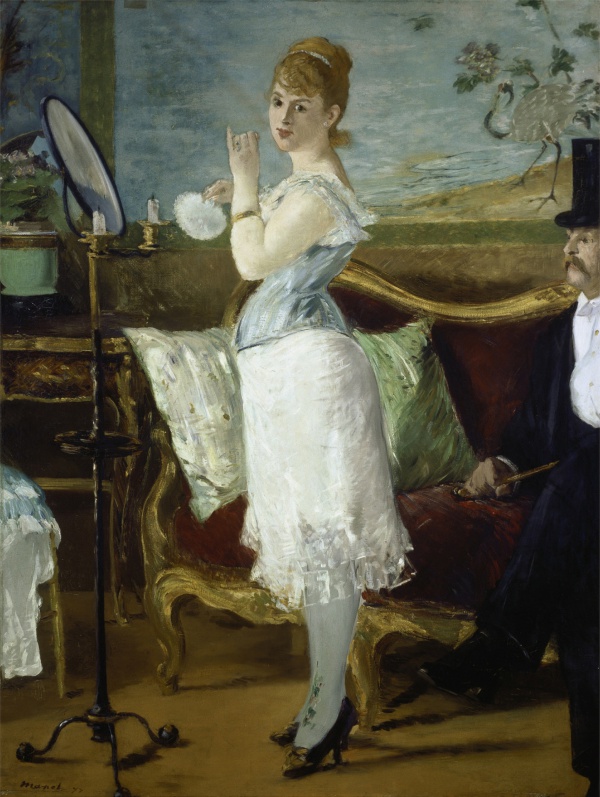Facts About Nana
"Nana" is a captivating painting by the French artist Édouard Manet, completed in 1877. When Manet submitted it to the Paris Salon that year, it was rejected. Undeterred, he showcased the painting in a shop window on Boulevard des Capucines in Paris, drawing crowds thanks to his renowned reputation. Today, this intriguing piece finds its home at the Kunsthalle Hamburg art museum in Germany.
The painting portrays a young woman standing before a mirror, flanked by two extinguished candles. She is dressed in a white chemise, a blue corset, silk stockings, and high-heeled shoes. The setting suggests an intimate boudoir, complete with a sofa, pillows, an elegantly dressed man, a chair, a table, and a flowerpot in the background.
The title "Nana" and the details of the painting imply that the woman is a high-class prostitute, as "Nana" was a common name for such women in the 19th century. At the time, French society was not prepared for such a frank depiction of prostitution, and the painting faced substantial criticism. Instead of appreciating its artistic qualities, critics focused on the controversial subject matter.
Émile Zola, a staunch supporter of Manet, later published a novel titled "Nana" in 1880. While it is unclear if Zola’s novel directly inspired Manet’s painting, some speculate that Manet may have drawn inspiration from Zola’s earlier work, "L'Assommoir" which features the character Nana.

 Belgium
Belgium